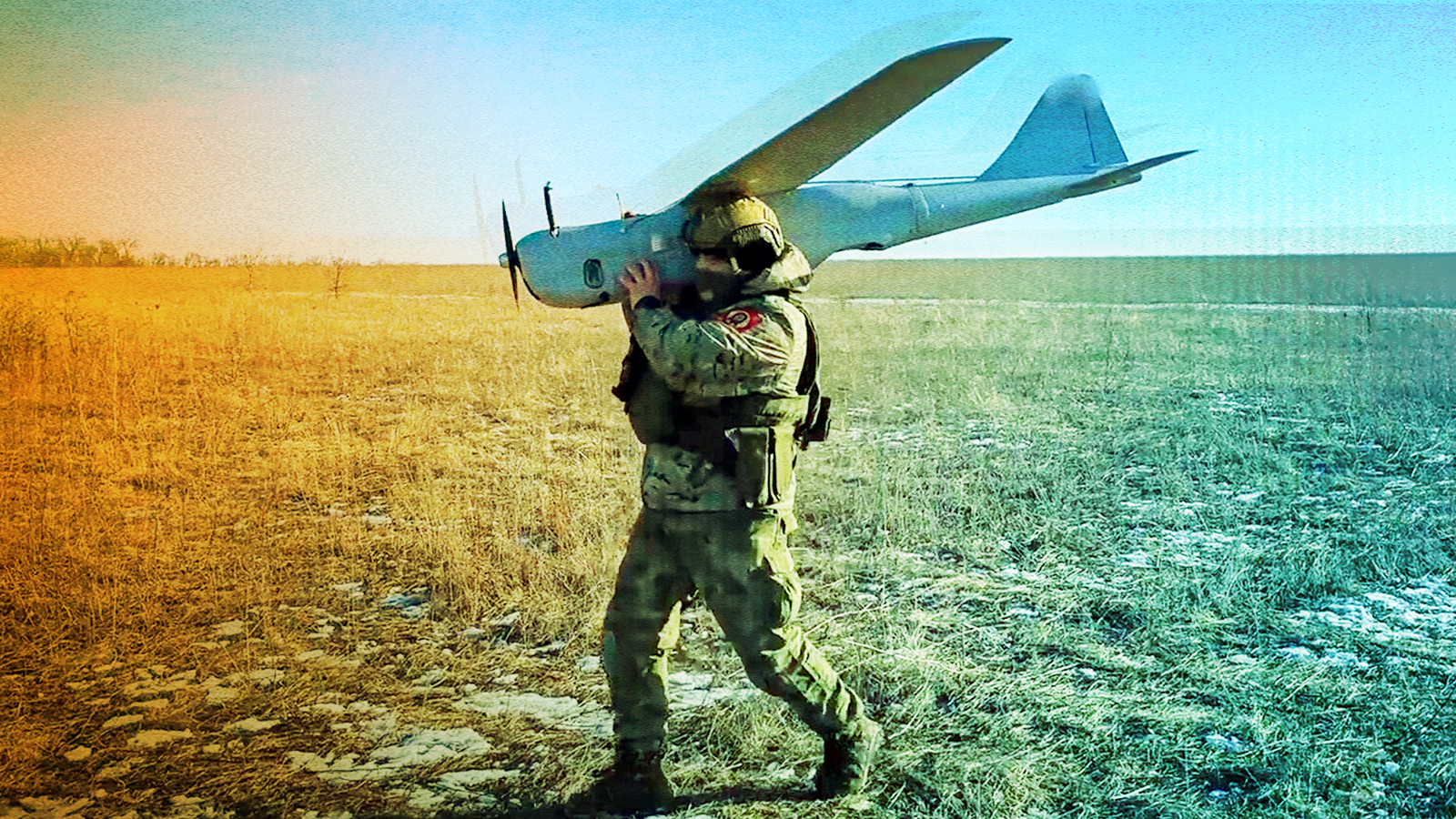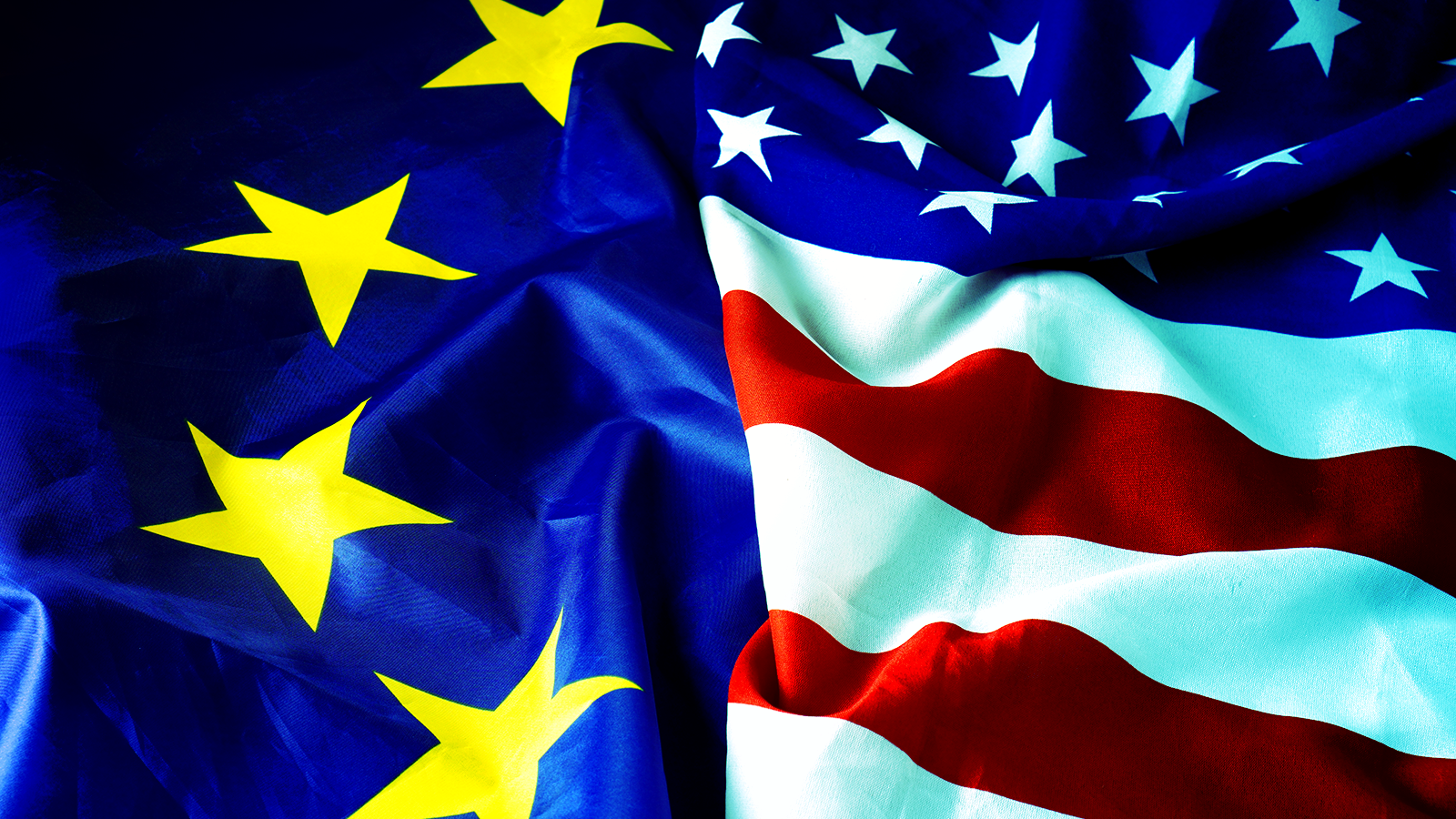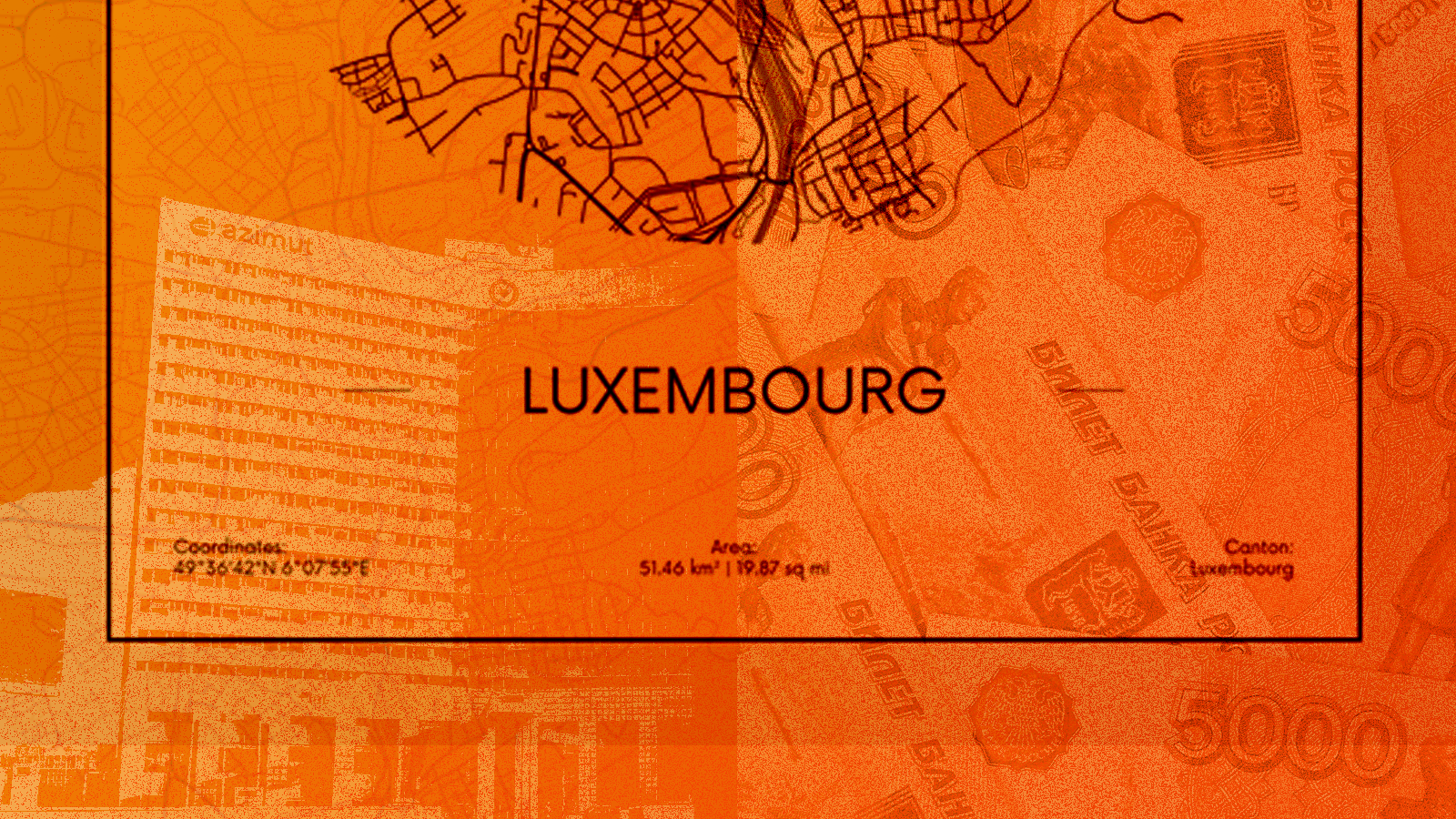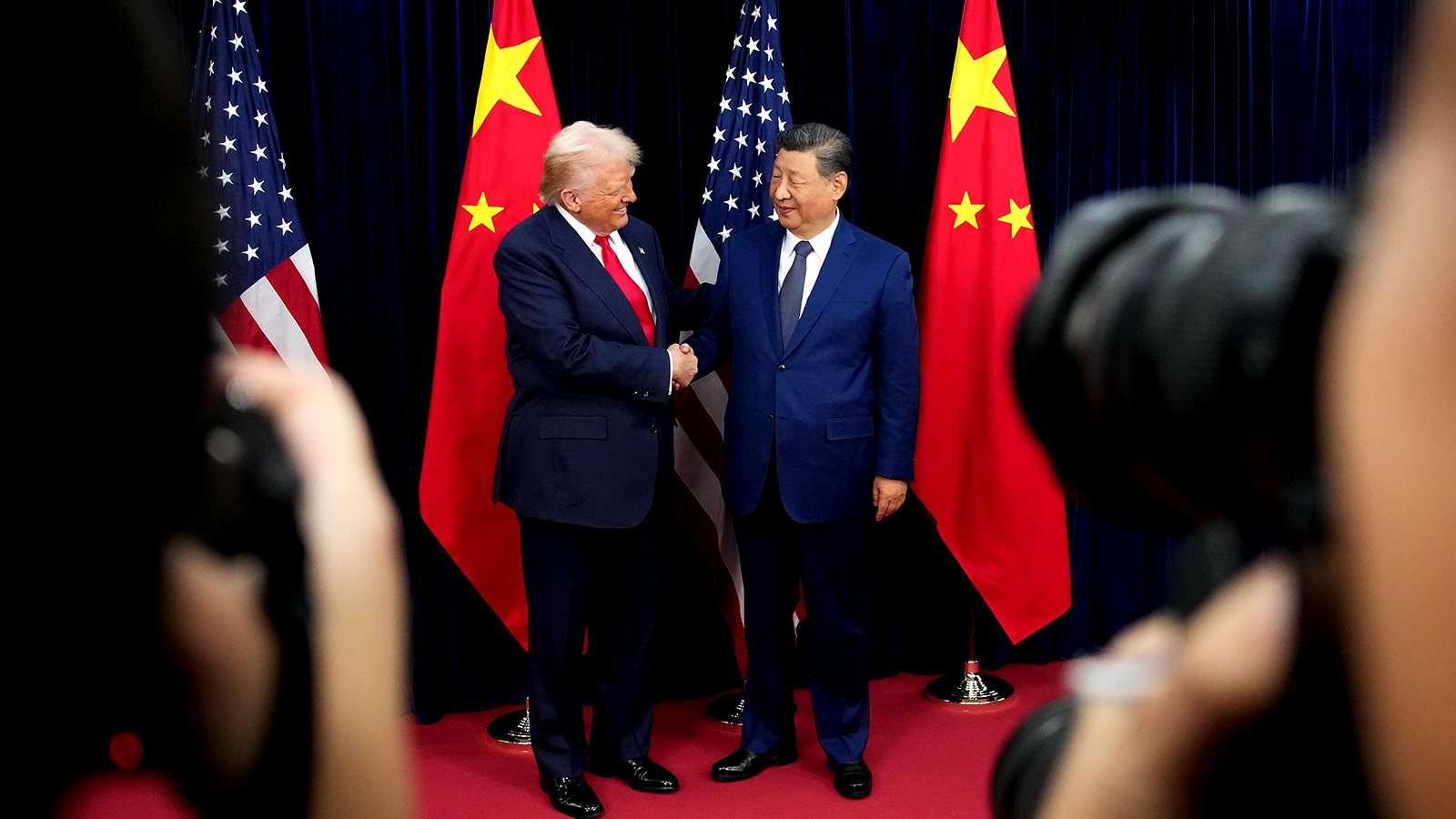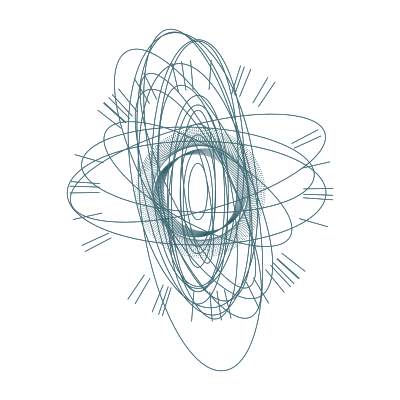Weaponized drones are redefining modern warfare as their strikes continue to define the war in Ukraine. Now, in recent weeks, Russian unmanned aerial vehicles (UAVs) have repeatedly entered NATO airspace in Europe, stirring alarm that such attacks could soon spill over.
Russia has made development of UAVs a national priority during the conflict, which has meant devoting steep resources to ramping up its domestic production capabilities. It has also meant increasingly obscuring its procurement of foreign components needed to build them.
A Kharon review of trade records shows how, even as sanctions and export restrictions tightened around it, one company in Russia’s drone-production pipeline kept acquiring sensitive American and European technology—by turning to an ever-shuffling series of suppliers from across Asia.
1. The Russian National Project for Unmanned Aircraft Systems, a government program aimed at developing, stimulating and standardizing production of domestic drones and components.
Ukraine recently has sanctioned a broad range of parties, including entities outside Russia, for facilitating drone production at the Alabuga zone. Some illustrate how Western components are being diverted into Russia’s UAV production program, Kharon’s research has found.
But Russia over the past few years has systemically built a web of front companies and opaque trade channels to conceal how foreign electronics flow into its drone programs, blurring the trail from global suppliers to the production lines that power its military.
Russia has made development of UAVs a national priority during the conflict, which has meant devoting steep resources to ramping up its domestic production capabilities. It has also meant increasingly obscuring its procurement of foreign components needed to build them.
A Kharon review of trade records shows how, even as sanctions and export restrictions tightened around it, one company in Russia’s drone-production pipeline kept acquiring sensitive American and European technology—by turning to an ever-shuffling series of suppliers from across Asia.
Zoom out
Russia’s national drone-production push appears to rely on a few key pillars:1. The Russian National Project for Unmanned Aircraft Systems, a government program aimed at developing, stimulating and standardizing production of domestic drones and components.
- Through the project, residents at research and production centers can apply for state support in developing drone prototypes.
- Aeronext Association membership offers an opportunity, it says, to gain “a competitive advantage” in UAV production, as well as the ability to develop “legislation and removal of administrative barriers in areas of application of unmanned aircraft systems.”
Ukraine recently has sanctioned a broad range of parties, including entities outside Russia, for facilitating drone production at the Alabuga zone. Some illustrate how Western components are being diverted into Russia’s UAV production program, Kharon’s research has found.
- Among Ukraine’s sanctions targets in July, for example, was Sharpleyz OOO, a Russian producer of laser engraving equipment that the U.S. has not targeted itself. Trade data indicates that, from September 2022 to August 2023, Sharpleyz received shipments from China of laser machine parts that bore the brand of a major U.S. semiconductor manufacturer.
But Russia over the past few years has systemically built a web of front companies and opaque trade channels to conceal how foreign electronics flow into its drone programs, blurring the trail from global suppliers to the production lines that power its military.
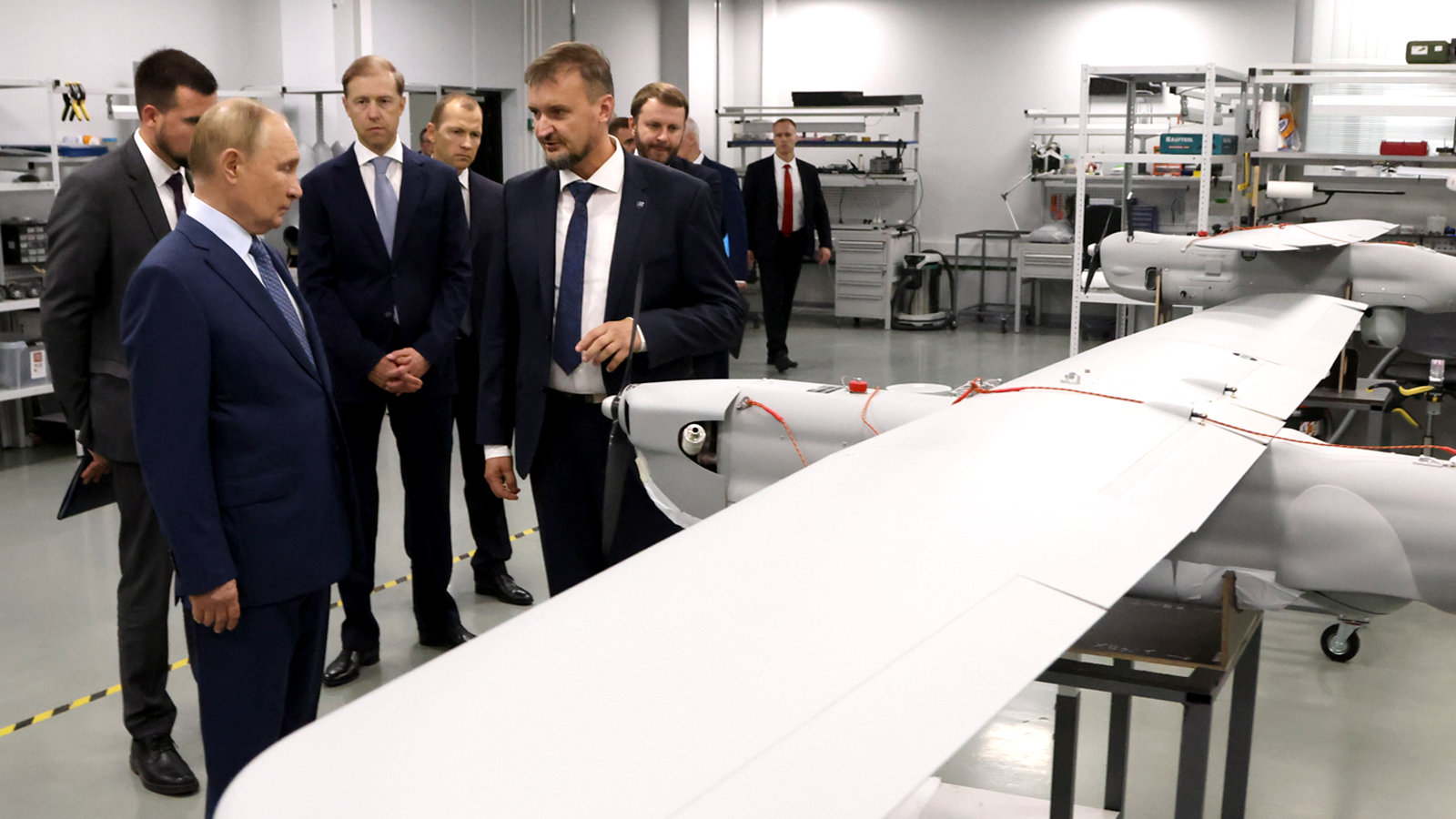
Russian President Vladimir Putin observes an exhibition of Orlan-10 UAVs at the Special Technology Center in St. Petersburg, during a September 2024 visit. (Getty Images)
Zoom in
A Kharon investigation into Russia’s drone-procurement ecosystem zeroed in on the network of a now-widely sanctioned Russian technology company, SMT-Aylogik OOO. Many of the companies that once supplied it would later end up sanctioned as well for doing business with it.- SMT-Aylogik was “involved in a large-scale procurement network to obtain foreign-origin technology for the Special Technology Center’s manufacture of Orlan drones,” the U.S. said when sanctioning it in May 2023.
- The Russian military then uses Orlan-10 drones in its war against Ukraine, the EU noted when sanctioning SMT-Aylogik itself in February 2024.
- Electronic integrated circuits, which allow for signal transmission and help drones function.
- Power amplifiers, which are used to boost performance of communication links and transmitters.
- Printed circuit boards, on which many electronic components in drones are mounted, providing mechanical support and essential electrical connections.
Before and after: A case study
Before Russia’s February 2022 invasion of Ukraine, SMT-Aylogik imported electronics components in bulk from a small group of German and Chinese suppliers, including thousands of shipments from Hong Kong-based Asia Pacific Links. (The U.S. State Department would later call it SMT-Aylogik’s “largest supplier of microelectronics.”)Electronic integrated circuits accounted for around half of these pre-invasion shipments, which included electrical components and devices manufactured by a range of major U.S. and European brands.
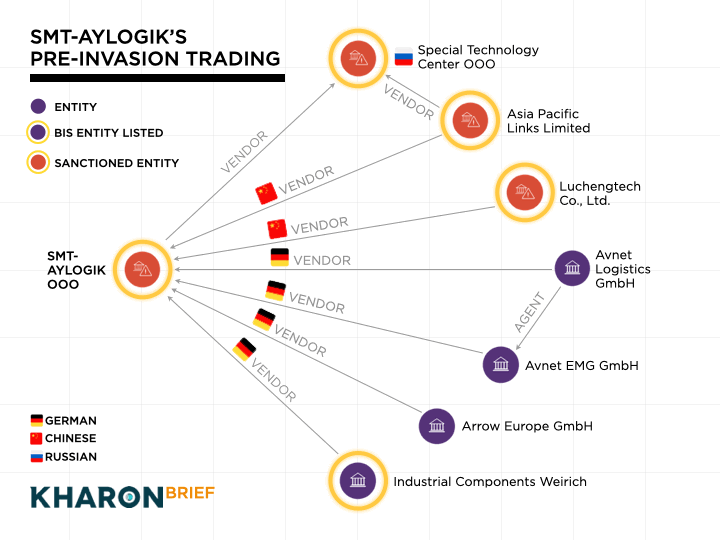
After the invasion, SMT-Aylogik appears to have lost all but one of its direct German trade partners: Industrial Components Weirich.
- The U.S. would add Industrial Components Weirich to the Entity List in September 2023, months after its last documented shipment to SMT-Aylogik. The Bureau of Industry and Security cited its role “in a conspiracy to violate U.S. export controls, including a scheme to supply the Special Technology Center … with components to make unmanned aerial vehicles (UAVs).”
- Additional Chinese companies like New Idea Guangzhou Technology, which sent Aylogik more than 1,900 shipments between February 2022 and August 2023, including components manufactured by major American and European brands. The U.S. Treasury Department later sanctioned New Idea and Shenzhen Yilufa Technology Co., Ltd., a fellow China-based supplier, citing their “hundreds of shipments of foreign-origin microelectronics” to SMT-Aylogik and another Russian firm.
- Türkiye’s Margiana Insaat Dis Ticaret Limited, which between August 2022 and December 2023 sent more than 750 recorded shipments to SMT-Aylogik, including sensitive U.S.- and U.K.-brand products. The end of that range is notably after the U.S. Treasury Department sanctioned Margiana Insaat Dis Ticaret, in September 2023; Treasury said its shipments to SMT-Aylogik “included High Priority Items of the kind recovered in multiple Russian weapons systems used against Ukraine,” including cruise missiles and Orlan-10 drones.
- India’s Futrevo, starting in November 2022. The State Department would sanction Futrevo in 2024, noting that it was “involved in the supply of over $1.4 million worth of CHPL items such as electronic components” to Aylogik.
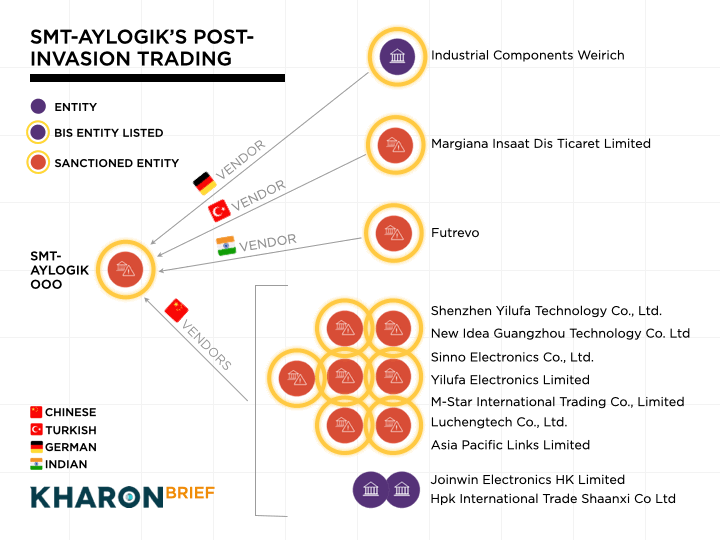
After the U.S. sanctioned SMT-Aylogik, in 2023, it adapted its supply chain again.
Aylogik’s volume of trade fell, according to trade records. But, relying now on a smaller group of Asian partners, it kept procuring components manufactured by major Western brands, notably through Futrevo.
Aylogik’s volume of trade fell, according to trade records. But, relying now on a smaller group of Asian partners, it kept procuring components manufactured by major Western brands, notably through Futrevo.
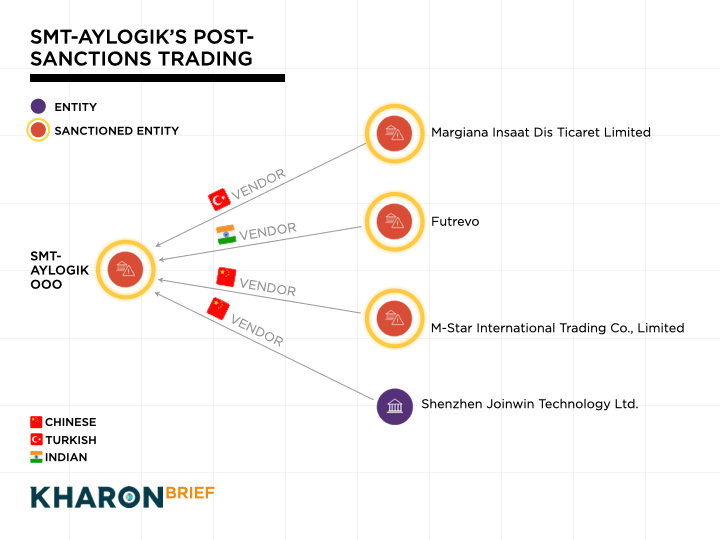
The bottom line
As Russia has expanded and adapted its domestic drone production ecosystem, it increasingly has turned to more generalized producers and electronics procurers to conceal its military supply chains.For Western manufacturers and exporters of CHPL items, that shift may require a shift in focus—from looking just at drone producers and factories to looking at actors positioned more closely to foreign procurement. Sources like Ukrainian sanctions can offer important leads, highlighting red-flag parties before they're named elsewhere.



